Potřebujeme váš souhlas k využití jednotlivých dat, aby se vám mimo jiné mohly ukazovat informace týkající se vašich zájmů. Souhlas udělíte kliknutím na tlačítko „OK“.
ASTM D7758-11
Standard Practice for Passive Soil Gas Sampling in the Vadose Zone for Source Identification, Spatial Variability Assessment, Monitoring, and Vapor Intrusion Evaluations
Automaticky přeložený název:
Standardní praktiky pro pasivní půdy odběru plynu v Vadose zóny pro identifikaci zdroje, prostorové variability hodnocení, monitorování a Vapor Intrusion evaluací
NORMA vydána dne 1.12.2011
Informace o normě:
Označení normy: ASTM D7758-11
Poznámka: NEPLATNÁ
Datum vydání normy: 1.12.2011
Kód zboží: NS-39074
Počet stran: 10
Přibližná hmotnost: 30 g (0.07 liber)
Země: Americká technická norma
Kategorie: Technické normy ASTM
Kategorie - podobné normy:
Zemní práce. Hloubicí práce. Budování základů. Podzemní práce
Anotace textu normy ASTM D7758-11 :
Keywords:
active soil gas, assessment, conceptual site model, monitoring, passive soil gas, semivolatile organic compounds, sorbents, source identification, spatial variability, thermal desorption-gas chromatography/mass spectrometry, vadose zone, vapor intrusion, volatile organic compounds, ICS Number Code 93.020 (Earth works. Excavations. Foundation construction. Underground works)
Doplňující informace
| Significance and Use | ||||||||||||||||||||||||||||||
|
Passive soil gas samplers are a minimally invasive, easy-to-use technique in the field for identifying VOCs and SVOCs in the vadose zone. Similar to active soil gas and other field screening techniques, the simplicity and low cost of passive samplers enables them to be applied in large numbers, facilitating detailed mapping of contamination across a site, for the purpose of identifying source areas and release locations, focusing subsequent soil and groundwater sampling locations, focusing remediation plans, identifying vapor intrusion pathways, tracking groundwater plumes, and monitoring remediation progress. Data generated from passive soil gas sampling are semi-quantitative and are dependent on numerous factors both within and outside the control of the sampling personnel. Key variables are identified and briefly discussed in the following sections. Note 1—Additional non-mandatory information on these factors or variables are covered in the applicable standards referenced in Section 2, and the footnotes and Bibliography presented herewith. Application—The techniques described in this practice are suitable for sampling soil gas with sorbent samplers in a wide variety of geological settings for subsequent analysis for VOCs and SVOCs. The techniques also may prove useful for species other than VOCs and SVOCs, such as elemental mercury, with specialized sorbent media and analysis. Source Identification and Spatial Variability Assessment—Passive soil gas sampling can be an effective method to identify contaminant source areas in the vadose zone and delineate the extent of contamination. By collecting samples in a grid with fewer data gaps, the method allows for an increase in data density and, therefore, provides a high-resolution depiction of the nature and extent of contamination across the survey area. By comparing the results, as qualitative or quantitative, from one location to another, the relative distribution and spatial variability of the contaminants in the subsurface can be determined, thereby improving the conceptual site model. Areas of the site reporting non-detects can be removed from further investigation, while subsequent sampling and remediation can be focused in areas determined from the PSG survey to be impacted. Monitoring—Passive soil gas samplers are used to monitor changes in site conditions (e.g., new releases on-site, an increase in contaminant concentrations in groundwater from onsite or off-site sources, and effectiveness of remedial system performance) as reflected by the changes in soil gas results at fixed locations over time. An initial set of data is collected to establish a baseline and subsequent data sets are collected for comparison. The sampling and analytical procedures should remain as near to constant as possible so significant changes in soil gas results can be attributed to those changes in subsurface contaminant levels at the site that will then warrant further investigation to identify the cause. Vapor Intrusion Evaluation—Passive soil gas sampling can be used to identify vapor migration and intrusion pathways (see Practice E2600), with the data providing a line of evidence on the presence or absence of the compounds in soil vapor, the nature and extent in relation to potential receptors, and whether a vapor pathway is complete. Sorbent samplers can be placed beneath the slab or in close proximity to buildings to collect time-integrated samples targeting VOCs and SVOCs at concentrations often lower than can be achieved with active soil gas sampling methods. Limitations—Passive soil gas data are reported in mass of individual compounds or compound groups identified per sample location, with the reporting units generally in nanograms (ng) or micrograms (μg) per sampler and not a concentration (see 6.8). Ideally, the data produced using this method will be representative of time-weighted soil gas concentrations, present in the vicinity of the PSG sampler and sorbed on the sampler during the exposure period; however, non-uniformity of sampler design, starvation effects during sample collection, or an insufficient amount of sorbent that results in saturation of the sorbent surface area, or combinations thereof, will affect the relationship between sorbed mass and soil gas concentrations present. The degree to which these data are representative of any larger areas or different times depends on numerous site-specific factors. In general, information obtained from a passive soil gas sampling program alone is not sufficient to support a quantitative determination of soil gas concentrations. Sampler Design—Passive soil gas is an effective investigatory/monitoring tool if the appropriate quality controls are included in the technology design, which includes uniformity in the construction of the sampler. At a minimum, controls should be in place to ensure that (1) the appropriate sorbents with hydrophobic properties are used to target the compounds of concern (see Practice D6196), (2) materials used to house the sorbents are chemically-inert, non-reactive or corrosive, and will not off-gas compounds or act as competing sorbents (see Guide D5314, paragraph 6.5.3), and (3) the sorbents are housed in suitable containers that protect the sorbents, allow diffusion of the soil gas to the sorbents, and facilitate installation of the sampler to the desired sampling depth. Sampler Conditioning—Before being sent to the field for deployment, the PSG sampler should be conditioned to remove any potential contamination present on or in the sorbent and sampler materials or both encountered during sampler construction or storage prior to use. The conditioning process should be one that does not damage the sorptive capability of the sorbent. Following conditioning, the sampler is then capped/resealed and stored in a container that provides adequate protection against ambient sources of contamination before and after sample collection in the field, including during transport. Preparation blanks from each batch of conditioned samplers should be analyzed to verify that the sorbents were effectively conditioned and do not retain measurable masses of target compounds above reporting limits. Furthermore, when trip blanks, which are included with all shipments to and from the field, report non-detects for the targeted compounds, these QC samples provide additional evidence that the samplers were conditioned to have no measurable mass of target compounds and that the measurements on field samples originate from the site itself. Sampler Exposure Periods—Guidelines for PSG exposure periods for source identification, spatial variability assessment, and vapor intrusion evaluation should consider the project objectives, target compounds, required detection limits or anticipated soil gas concentrations or both, design of the passive sampler, matrix heterogeneity, soil types (total porosity), soil moisture level (water filled porosity), and depth to expected contaminants. Sites having coarse-grained dry soils, high concentrations, shallow groundwater or soil contamination or both, and volatile compounds typically require shorter exposure periods. Sites with finegrained, clays or moist soils or both, deep contaminant sources, low concentrations, or SVOCs, or combinations thereof, typically require longer exposure periods. Exposure periods typically range from days to weeks but can be as brief as one hour when high concentrations of target compounds are expected in the soil vapor. Sampler Spacing—Grid designs can consist of regularly spaced sampler locations, random or irregular spaced, and as transects or varying spatial intervals (see Guide D6311). Biased spacing in which smaller sample spacing is used in areas with known or suspected targets (that is, source areas) and large spacing in areas not believed to be impacted are also used. For large area investigations, a staged or phased sampling program can be used. The investigation begins with a widely spaced regular grid design. The initial soil gas results are reviewed and subsequent sampling is conducted at locations where the target compounds were observed. The subsequent survey design consists of more closely spaced samples to resolve the feature of interest in greater detail. Multiple phases of soil gas sampling can be combined to provide one comprehensive image of the soil gas results. Staged or phased investigations require multiple deployments adding costs to the overall investigations. However, areas of the site that have nondetectable values in the soil gas may be removed from further investigation. There is no prescribed or set sampler spacing appropriate for all sites, as sample spacing and survey design are based on project objectives and each site is unique. General recommendations for sampler spacing range from 3 to 30 m, with 7.5- to 15-m spacing when site knowledge is lacking. Infill sampling is recommended in areas having wider sample spacing initially. Site-specific information (investigation area size, groundwater depth, soil type and moisture content, purpose of the investigation, etc.) should be considered along with these guidelines in determining the grid spacing used. The selection of grid cell size (a direct function of the sampler spacing deployed in a grid pattern) is strongly dependent upon the relationship between both project confidence level and budget requirements. The tendency exists for investigators with constrained budgets to use overly large grid cell spacing. This action of “undersampling” normally results in inadequate, over-interpreted data with unsupported conclusions. Care shall be taken to avoid this problem (Guide D5314). In designing an effective soil gas survey to develop a rational conceptual site model, the survey objective balanced by budget should determine the sample spacing. Sampling Depth—Consideration of project objectives should be taken into account when determining deployment depth. It is ideal, when possible, to deploy samplers at the same depth to ensure data consistency. PSG samplers are generally installed from a depth of 15-cm to 1.0-m BLS; however, holes may be advanced to greater depths when appropriate, and samplers can also be suspended beneath surface flux chambers or in permanent vapor ports. Soil Types—In general, sandy soils tend to be more porous and permeable and, thus, require shorter exposure times. Conversely, soils with high clay contents tend to be less porous and permeable and typically have lower flux rates (see Practice D2487). Soil types vary in vapor permeability due to the differences in the number and interconnectivity of air-filled pores. The more air-filled, interconnected the pores are, the greater the potential flux of contaminants through the soil to the sampler. Starvation effects resulting in low bias are more likely to occur in low permeability soils where the flux through the soil matrix is limited. Effects of Soil Moisture—Because diffusion of vapors from subsurface sources to passive samplers relies on interconnected and air-filled pores within the soil column, soil moisture can have a significant effect on the flux of contaminants and, therefore, the mass of the contaminant available for adsorption by the sampling device. The use of hydrophobic sorbents minimizes the effect on sampler sensitivity, but does not change the impact of soil moisture on contaminant soil gas concentrations. As a result, areas of high soil moisture may have significantly lower soil gas results than areas of low soil moisture, even though subsurface concentrations are similar in both areas. Therefore, some knowledge of the soil moisture conditions can help in interpreting soil gas results. This knowledge is also useful for comparing results from subsequent surveys performed at a site. Effects of Target Compounds—In general, the larger the molecular weight of the compounds being targeted, the lower the vapor pressure and resulting concentrations in the soil gas, and therefore, the longer the required exposure time of the PSG samplers in the vadose zone. Sealing (Plugging) the Top of the Hole—Once the PSG sampler is inserted in the ground, the top of the hole is plugged with a material that will effectively seal the hole, such as aluminum foil or cork, which can then be covered with soil. For concrete or asphalt surfacing, an approximately 5-mm-thick mortar or quick-setting concrete patch above the plug can be used as an option to maintain the integrity of the surface while the sampler is in the ground. The materials used to plug the hole should not contribute compounds of concern and the seal should be flush mounted to keep the sampler safe from harm, prevent ingress of ambient air or surface water, and not interrupt ongoing site activities during the exposure period. Effects of Ambient Air While Installing/Retrieving Samplers—PSG samplers arrive at the site sealed to protect the sorbents from contaminants in ambient air during transport. Just prior to installation into the hole, and then again during retrieval, the sampler is exposed to ambient air for a brief period of time. The typical time of exposure to the ambient air is less than 15 s. In some instances, it may be necessary to collect a field blank using a PSG sampler to evaluate whether compounds in the ambient air potentially biased the results. To perform this quality control check, an identical PSG sampler is opened and exposed to the ambient air for approximately the same amount of time required to install and then later retrieve a PSG sampler at a designated location. The field blank is sealed at all other times and is transported to the laboratory along with the field samples. Care should be taken to minimize the sorbent exposure to ambient air during field activities. Obvious sources of contamination (e.g., gas-powered electrical generators or vehicle exhaust) should not be in close proximity when installing/retrieving a sampler. Note 2—The quality of the result produced by this standard is dependent on the competence of the personnel performing it and the suitability of the equipment and facilities used. Agencies that meet the criteria of Practice D3740 are generally considered capable of competent and objective testing/sampling/inspection/and so forth. Users of this standard are cautioned that compliance with Practice D3740 does not in itself assure reliable results. Reliable results depend on many factors; Practice D3740 provides a means of evaluating some of those factors. |
||||||||||||||||||||||||||||||
| 1. Scope | ||||||||||||||||||||||||||||||
|
1.1 Purpose—This practice covers standardized techniques for passively collecting soil gas samples from the vadose zone and is to be used in conjunction with Guide D5314. 1.2 Objectives—Objectives guiding the development of this practice are: (1) to synthesize and put in writing good commercial and customary practice for conducting passive soil gas sampling, (2) to ensure that the process for collecting and analyzing passive soil gas samples is practical and reasonable, and (3) to provide standard guidance for passive soil gas sampling performed in support of source identification, spatial variability/extent determinations, site assessment, site monitoring, and vapor intrusion investigations. 1.3 This practice does not address requirements of any federal, state, or local regulations or guidance or both with respect to soil gas sampling. Users are cautioned that federal, state, and local guidance may impose specific requirements that differ from those of this practice. 1.4 Units—The values stated in SI units are to be regarded as standard. No other units of measurement are included in this standard. 1.5 This standard does not purport to address all of the safety concerns, if any, associated with its use. It is the responsibility of the user of this standard to establish appropriate safety and health practices and determine the applicability of regulatory limitations prior to use. 1.6 This practice offers a set of instructions for performing one or more specific operations. This document cannot replace education or experience and should be used in conjunction with professional judgment. Not all aspects of this practice may be applicable in all circumstances. This ASTM standard is not intended to represent or replace the standard of care by which the adequacy of a given professional service must be judged, nor should this document be applied without consideration of a project's many unique aspects. The word “Standard” in the title means only that the document has been approved through the ASTM consensus process. |
||||||||||||||||||||||||||||||
| 2. Referenced Documents | ||||||||||||||||||||||||||||||
|
Podobné normy:
Historická
15.1.2011
Historická
1.11.2011
Historická
1.3.2008
Historická
1.5.2012
Historická
1.7.2008
Historická
15.11.2013
Doporučujeme:
Aktualizace zákonů
Chcete mít jistotu o platnosti užívaných předpisů?
Nabízíme Vám řešení, abyste mohli používat stále platné (aktuální) legislativní předpisy.
Chcete vědět více informací? Podívejte se na tuto stránku.


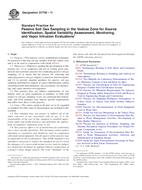
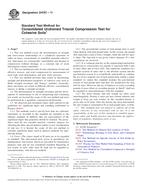 ASTM D4767-11
ASTM D4767-11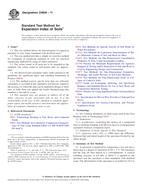 ASTM D4829-11
ASTM D4829-11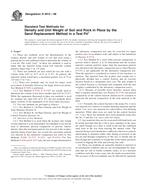 ASTM D4914-08
ASTM D4914-08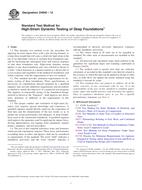 ASTM D4945-12
ASTM D4945-12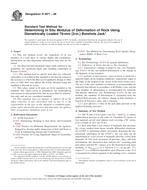 ASTM D4971-08
ASTM D4971-08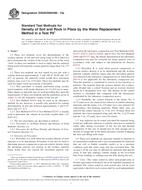 ASTM D5030/D5030M-13..
ASTM D5030/D5030M-13..
 Cookies
Cookies
